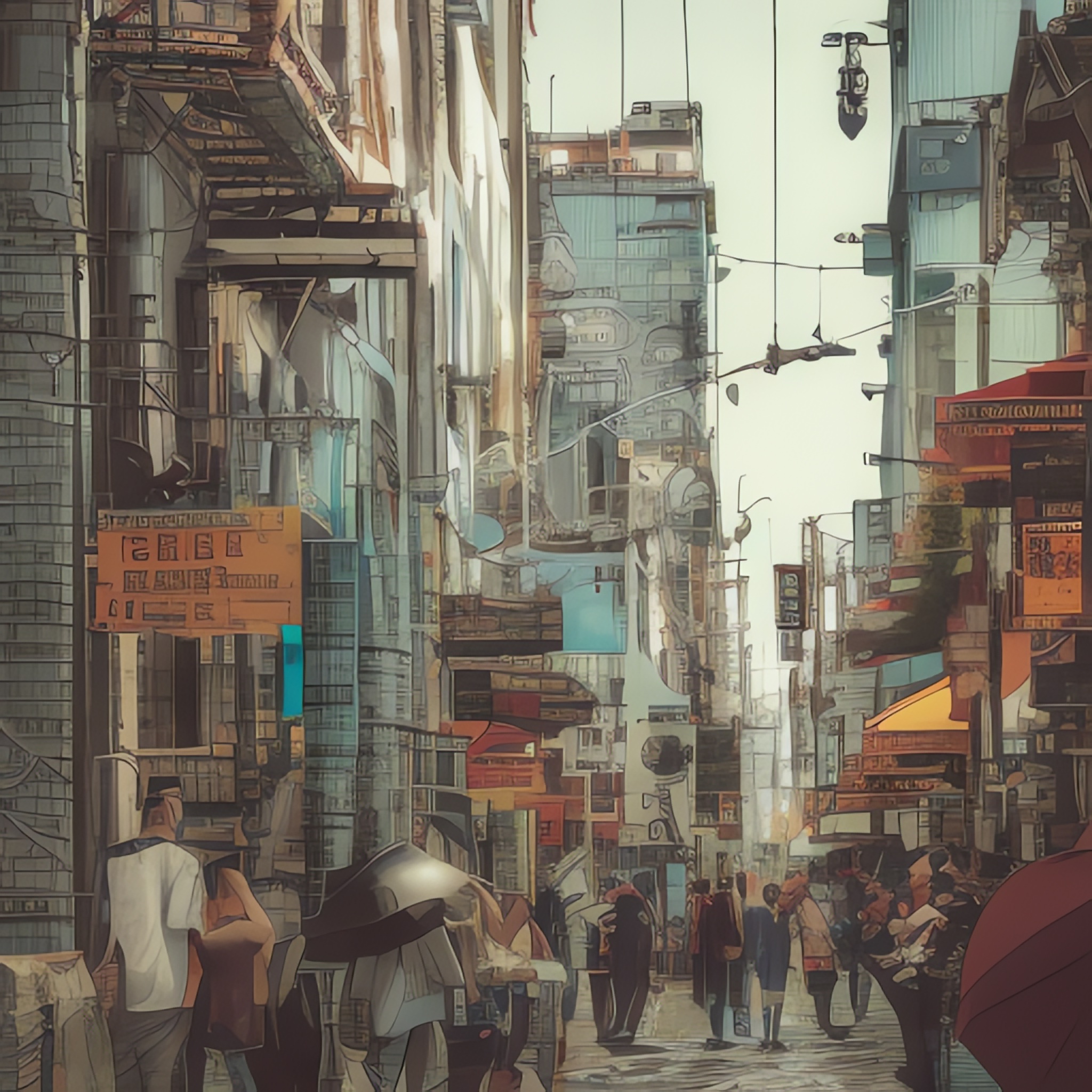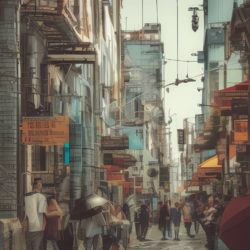
I spent a good part of my youth reading science fiction. The year 2022 is often in the future that was described in these books, in particular the Cyberpunk genre. Of course, the present is pretty different from these fictions. It has become cliché to bemoan the absence of flying cars, it might sound silly, but I think it shows one essential issue people have the present – there is an increasing tension between the future and a continuation of the present. In other words, there are no cars in Star Trek.
I can’t say I’m a fan of Star-Treck, I find the show generally too naïve and the plot of the episodes make for a good background listening, not something I would engage fully with. Culturally, it has the mix of universalism and US-centrism that I know well from work, and which I find profoundly annoying. The interesting thing is, Star Trek is deeply rooted in US society, but that society of the future is not centred around cars, or even their replacement. There are cities with pedestrian areas, public transportation.
There are a few cars, flying or not, in the Star Trek universe: there is one, floating in space, in the Voyager episode the 37’s, and in the Star Trek reboot movie, Kirk drives an car during the introduction sequence, in both cases cars are old and more plot or stylist devices than actual means of transportation. There many other examples, I suspect, but generally they are not important. Of course, in a universe of teleportation devices and starships, a car is not that useful, but maybe because of its military focus, individual means of transportation are just not that important.
Now, there are other science-fiction styles, like the Cyberpunk genre I mentioned earlier. Cars again don’t play such an important role, as the genre is pretty urban. There is a car-chase early in Snowcrash, which with car ending in a pool and the delivery being finished by woman with a skateboard. Virtual Light is centred around a bike courrier. Hardwired has a hover-tank playing a big role, but that book is closer to the post-apocalyptic genre.
Cars features heavily in the post-apocalyptic genre, Mad Max with no motor vehicles would be something very different. Still, if you look at the 100s, Love and Monsters, or daybreak, little or no cars. These shows are geared towards young adults, but this is fiction, in a zombie apocalypse, they could drive cars, but somehow this is not super important.
I find it interesting that suburban life seems to be a thing only in pretty old science-fiction, movies from the 70s like Sleepers, or books like Ira Levin’s The Stepford Wives, probably some novels by Robert Sheckley. I suppose some will invoke a woke conspiracy , but would involve so many different authors, from Robert A. Heinlein and Gene Roddenberry to the Cyberpunk crowd.
There is a suburban culture, with its rituals, customs and values, and cars play an central role in it. It never was sustainable, ecologically, financially or even structurally, these are places where if you can’t drive, because you are too young or too old, or any other reason, you cannot be independent. I honestly cannot say I have a clear picture of the future, there are many competing visions, but a continuation of the current suburbia is not in the cards, I you look up Suburbia 2.0, the core idea is to make them denser, more urban.
I think this is where this whole talk about culture wars comes from. The world is faced with a lot of change, but this is less a problem for cities, which are basically defined as the places that change: deindustrialisation, gentrification, urban renewal, new public transport infrastructure. Most of the changes in the suburban world were more superficial, different architectural styles, larger cars. Suburbia gave us SUV, Mc Mansions, soccer moms. Not exactly shiny future building material, or signs of a culture that can or wants to change.
In a sense, the problem of Star Trek is not that it use metric units, or has gay characters, or inter-racial relationships. The problem is that it describes one future where some cultures are less dominant, or even story-worthy. Picard is french, Chakotay is native American, Sisko is creole and has an interest in the forgotten sport of Baseball, Chekov is Russian, Janeway is from pretty urban Bloomington, Indiana, O’Brian is Irish, Keiko is Japanese. Maybe what Star Trek needs is a character that comes from suburban background, who can narrate that culture.
